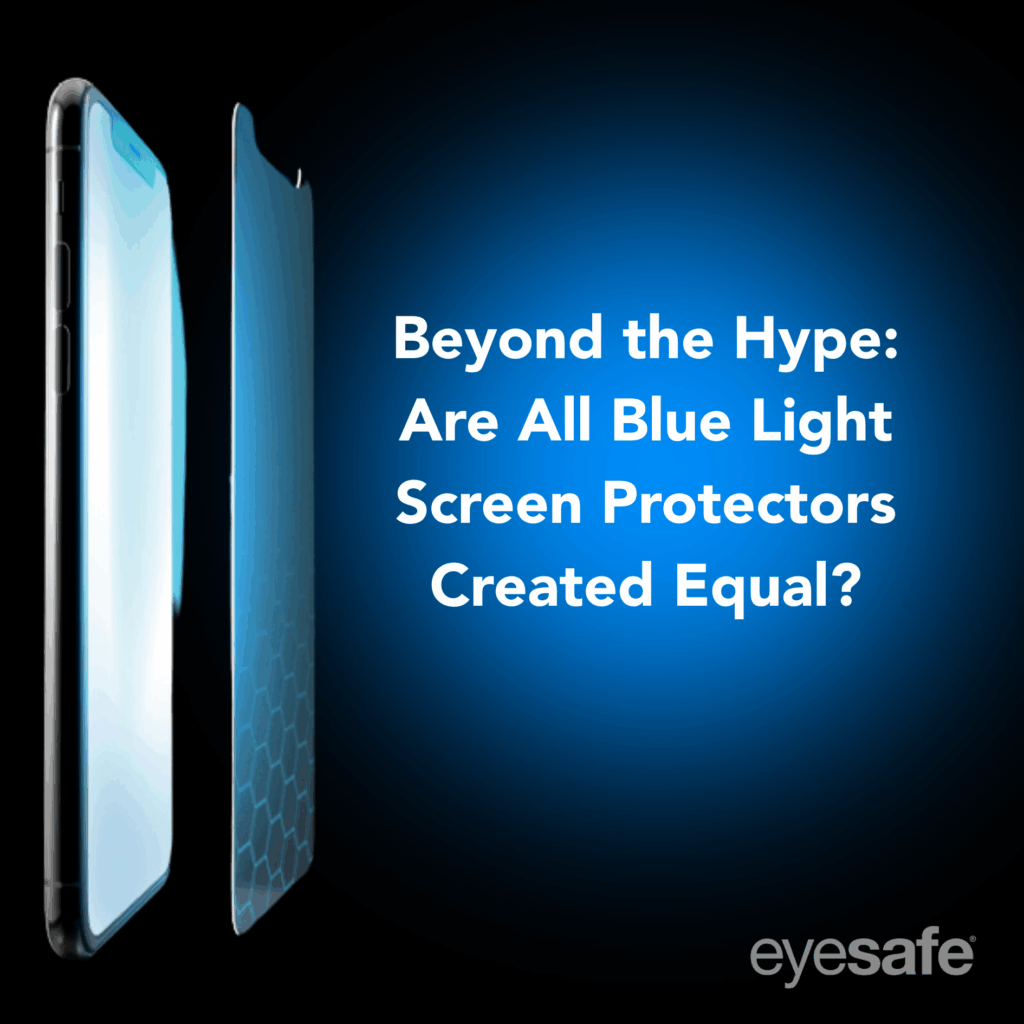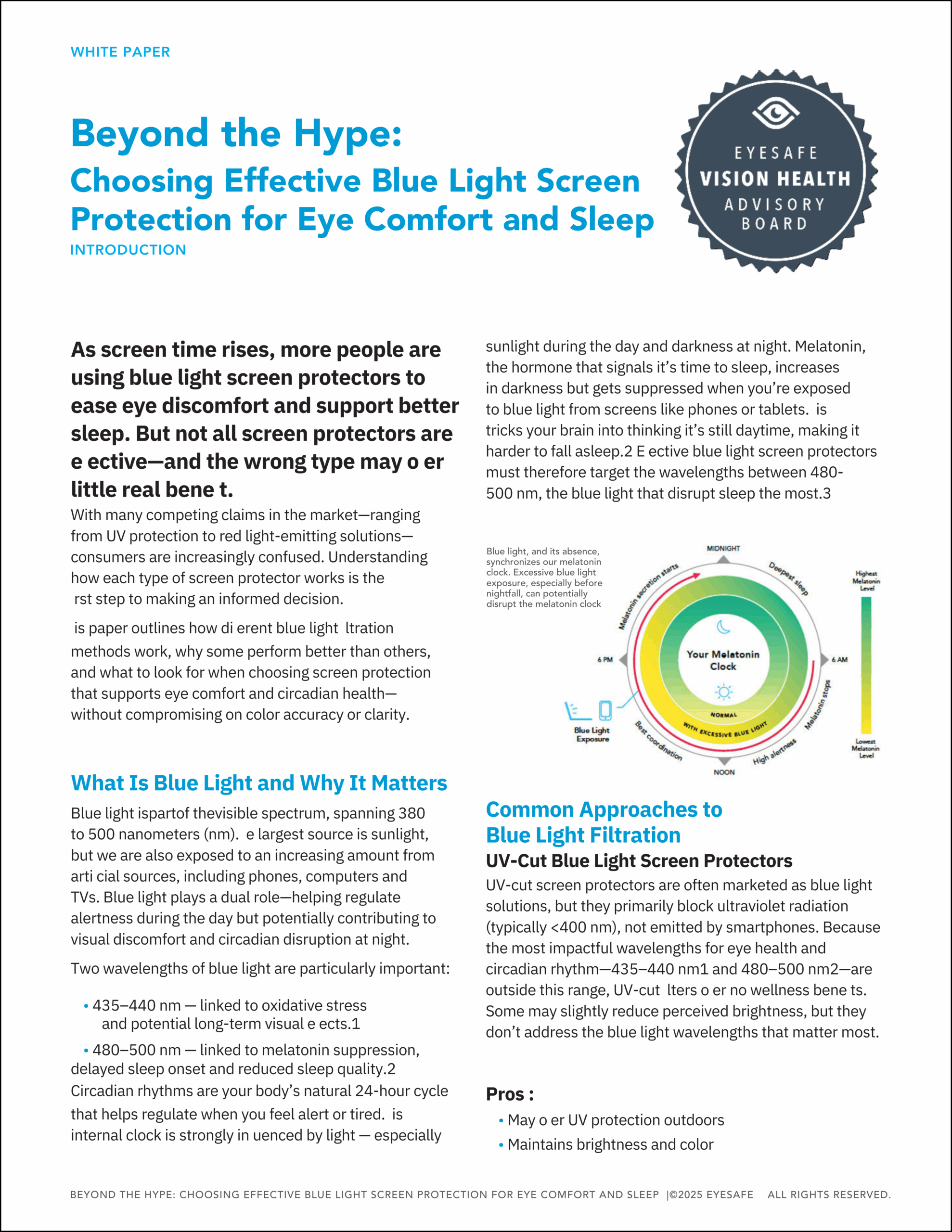Screens are at the center of our lives — for work, school, entertainment, and everything in between. With this constant exposure, it’s no surprise that more people are searching for solutions to reduce eye discomfort and protect sleep. One of the most popular options? Blue light screen protectors.
But here’s the challenge: the market is crowded with products that sound similar, yet vary widely in effectiveness. Some promise UV blocking, others tout red-light benefits, and many simply label themselves “blue light filters” without clear science to back it up.
So how do you know which ones actually work?
Cutting Through the Confusion
Blue light plays a dual role: during the day it helps us stay alert, but at night it can interfere with melatonin and make it harder to fall asleep. Not every wavelength is equally disruptive — and that’s where the differences between screen protectors start to matter.
The problem is, many products on the market don’t target the right wavelengths or trade blue light protection for poor color quality. Others make wellness claims that don’t stand up to scrutiny.
 What You’ll Learn in the White Paper
What You’ll Learn in the White Paper
Our new white paper, Beyond the Hype: Choosing Effective Blue Light Screen Protection for Eye Comfort and Sleep, pulls back the curtain on:
-
The specific wavelengths of blue light most closely tied to eye health and sleep disruption.
-
Why some common screen protector types may offer little benefit — despite bold marketing claims.
-
The features to look for if you want real protection without sacrificing screen color.
Why It Matters
Whether you’re a parent thinking about your child’s screen use, an employee logging long hours at the computer, or simply someone who wants to sleep better after hours of gaming, the type of screen protection you choose matters more than you might think.
Download the full white paper to see how the most popular types of blue light screen protectors stack up — and which ones deliver real benefits backed by science.

